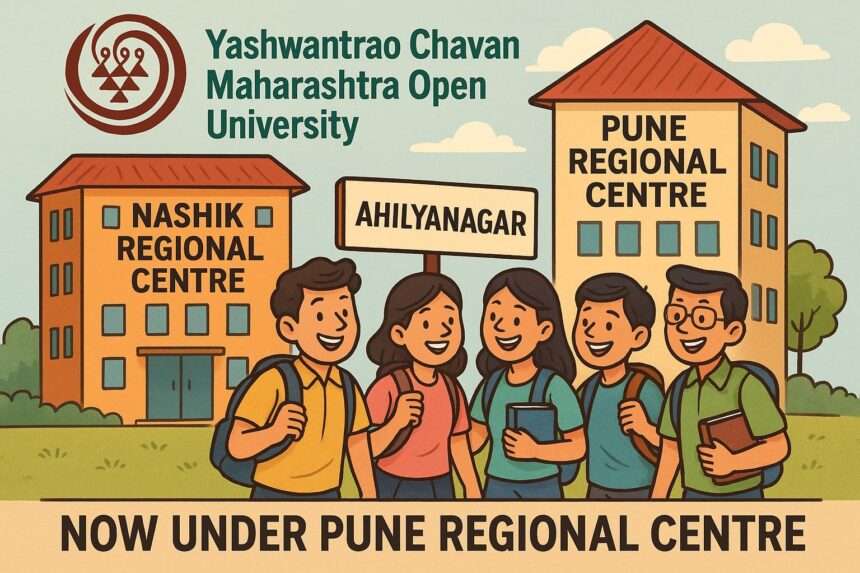Ahmednagar | July 17 | Correspondent
(Education) In a significant administrative shift, Yashwantrao Chavan Maharashtra Open University (YCMOU) has officially moved Ahilyanagar district (formerly Ahmednagar) from its Nashik Regional Center to the Pune Regional Center. The decision was ratified by the university’s Management Council.
(Education) Until now, the Nashik Regional Center covered Nashik, Ahilyanagar, Dhule, Jalgaon, and Nandurbar districts. On the other hand, Pune Regional Center catered to Pune, Solapur, and Sangli districts. With the new realignment, all study centers and affiliated colleges in Ahilyanagar will now fall under the jurisdiction of the Pune Regional Center.
(Education) Dr. Dilip Bharad, the University Registrar, explained, “Ahilyanagar is geographically closer to Pune, and this change will help streamline services such as examination coordination, certification issuance, and academic interactions.” He further added that this restructuring is aimed at enhancing administrative efficiency and ensuring better student support.
Contents
This transition is expected to benefit students, coordinators, and academic institutions alike by improving response times and operational transparency.
Like every decision, pros of this decision include the potential for improved accessibility and quicker service delivery due to Pune’s proximity, which could enhance student satisfaction and academic performance. The move is also expected to foster stronger collaboration between Ahilyanagar’s institutions and Pune’s administrative hub, potentially attracting more resources and expertise. Additionally, the centralized management under Pune could lead to standardized processes and better monitoring of educational outcomes which would yield better results like more active participation of students due to convenience.
However, this educational transition is not without challenges. Some of the cons may include initial disruptions as stakeholders adjust to the new administrative structure, potentially causing delays in ongoing processes. There could also be resistance from those accustomed to the Nashik Center’s oversight, leading to temporary administrative friction. Furthermore, the shift might strain existing logistical networks established under the Nashik jurisdiction, requiring significant effort to realign them effectively. The university acknowledges these potential hurdles and is committed to managing the transition smoothly to ensure minimal impact on students and staff.
This strategic realignment for education reflects YCMOU’s ongoing efforts to optimize its regional operations and provide enhanced educational support, with the hope that the long-term benefits will outweigh the short-term challenges.
These steps towards enabling education among mass collectively make better prospects for the future.
Read This: Habit of reading eBooks





